We all know that plants play an important role in providing us with oxygen, but did you know some indoor plants are even more efficient at producing oxygen than others?
Picture a lush jungle of green foliage and blooming flowers in the comfort of your own home.
Here we will discuss the top 10 highest oxygen-producing indoor plants so that you can create this vision for yourself!
Indoor plants provide numerous benefits to our health and well being, from air purification to stress relief.
Oxygen is key for sustaining life and these 10 houseplants have been found to be especially effective at releasing it into the atmosphere.
We’ll take a look at their unique characteristics as well as how they can improve the quality of your living space.
Pothos
Pothos is a popular houseplant known for its lush, green foliage and low maintenance requirements. It’s an easy choice for anyone looking to add oxygen-producing greenery indoors.
Watering needs are minimal; pothos can survive in dry soil if necessary and only requires moderate amounts of water when the topsoil begins to dry out.
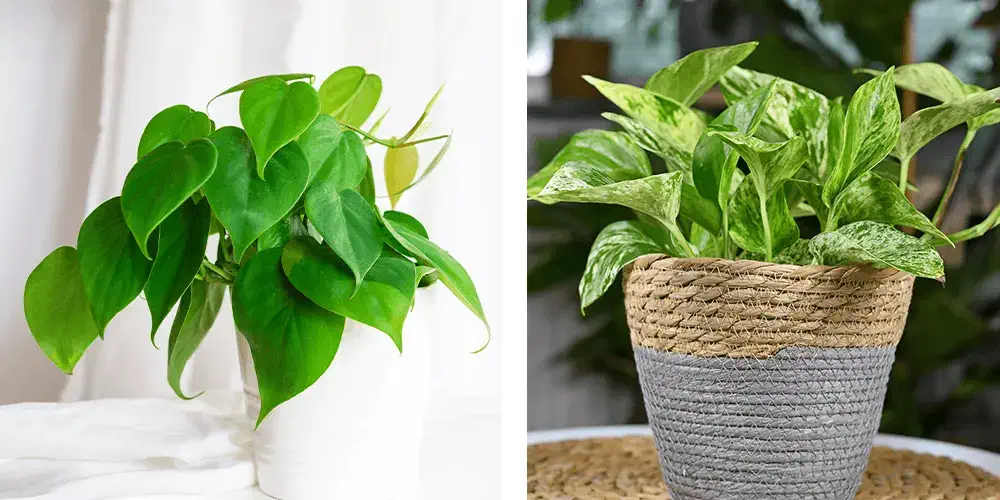
As far as growth rate goes, it’s very quick; some species have been known to grow up to 10 feet long! Its air purifying abilities make it a great addition: not only does it produce oxygen, but it also absorbs toxins like formaldehyde from the air.
When selecting lighting needs, this plant thrives best in medium to bright indirect sunlight, although they can tolerate lower light conditions with ease.
Soil type doesn’t need to be overly complicated either – all you really need is standard potting mix or cactus/succulent mix that drains quickly.
All in all, pothos makes an excellent option for those who want an attractive indoor plant without too much fuss.
Areca Palm
It’s no surprise that plants play a crucial role in providing oxygen for our indoor spaces. The Areca Palm is an excellent choice when it comes to producing oxygen indoors. It has earned its place among the top 10 highest oxygen-producing plants due to its unique properties and characteristics.
The Areca Palm, also known as Dypsis lutescens or Golden Cane Palm, is popularly used both indoors and outdoors because of its air purifying effects and aesthetic qualities.
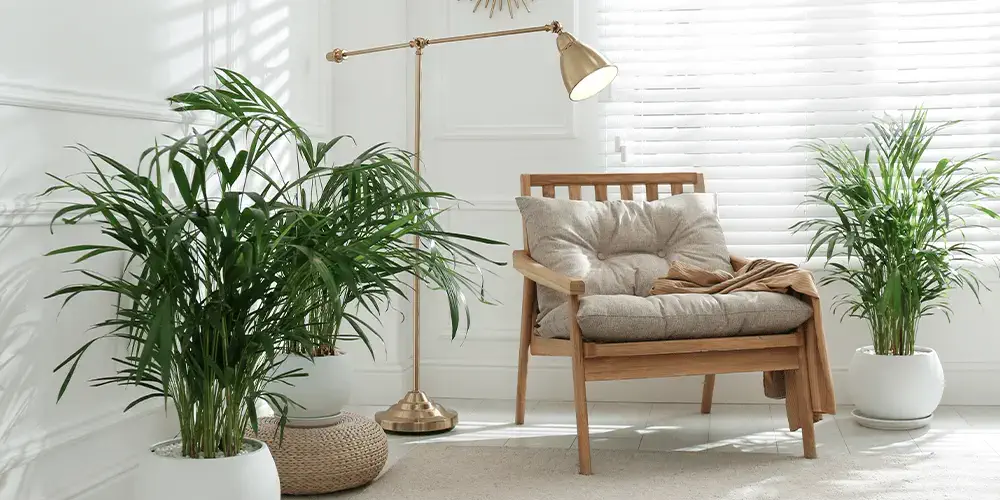
Here are some important points related to how you can take care of this plant:
- Watering Techniques – Allow the soil to dry out between waterings; water once every 5-7 days during the growing season (spring/summer), and reduce watering in winter months.
- Soil Type – Any well-draining potting mix works great with the Areca Palm; make sure there’s plenty of perlite present in the mix for good drainage.
- Air Purifying Effects – This variety efficiently removes harmful toxins like formaldehyde, benzene, trichloroethylene from your home environment by absorbing them through their leaves .
- Light Requirements – Keep your palm tree in bright indirect light near a south, east or west facing window if possible; avoid direct sunlight at all costs since it could burn the fronds easily.
- Temperature Needs – Prefers temperatures ranging from 65°F – 85°F (18°C – 29°C). Avoid cold drafts and sudden temperature drops.
With these tips on hand, you’re ready to bring home an Areca Palm! While they may require more attention than other types of palms, they offer many advantages such as creating aesthetically pleasing foliage while promoting cleaner air quality within your space – making them ideal additions to any home décor scheme.
Snake Plant
The Snake Plant, also known as the Mother-in-Law’s Tongue, is one of the top 10 highest oxygen producing indoor plants. It has a striking appearance with its yellow and green striped leaves that grow upwards in an elegant S-shape. Not only does it offer air purification benefits but it requires minimal care to maintain its health.
When potting your Snake Plant ensure you use fast draining soil such as cactus mix or regular potting soil mixed with perlite for additional drainage. The Snake Plant prefers bright indirect light but can tolerate low light conditions if needed; however, too much direct sunlight will scorch its foliage.
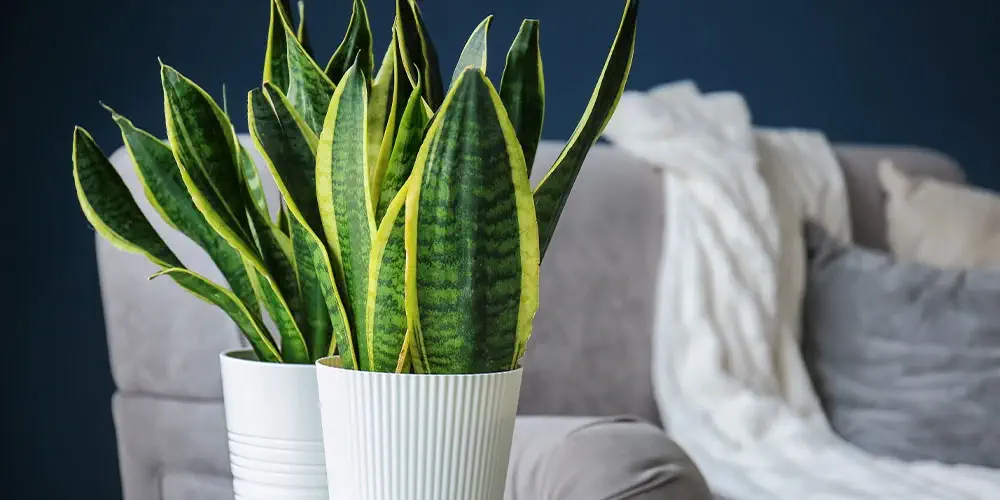
Watering should be done sparingly about once every 2 weeks using lukewarm water then letting the soil dry out before watering again. Natural pest control may need to be used from time to time depending on infestations – insecticidal soap works well against pests like spider mites and mealy bugs.
Overall, the Snake Plant is an attractive yet hardy houseplant that produces high levels of oxygen while requiring very little maintenance in return. Its iconic look makes it an ideal choice for any home or office setting looking for extra beauty and improved air quality!
Spider Plant
Having discussed the Snake Plant, let’s now move on to its cousin: the Spider Plant.
Like the Snake Plant, it is easy to grow and air purifying, making it a great choice for those looking for an oxygen-producing houseplant that doesn’t require much attention.
In terms of humidity levels and light requirements, the Spider Plant prefers slightly more compared to its relative – but still nothing too demanding!
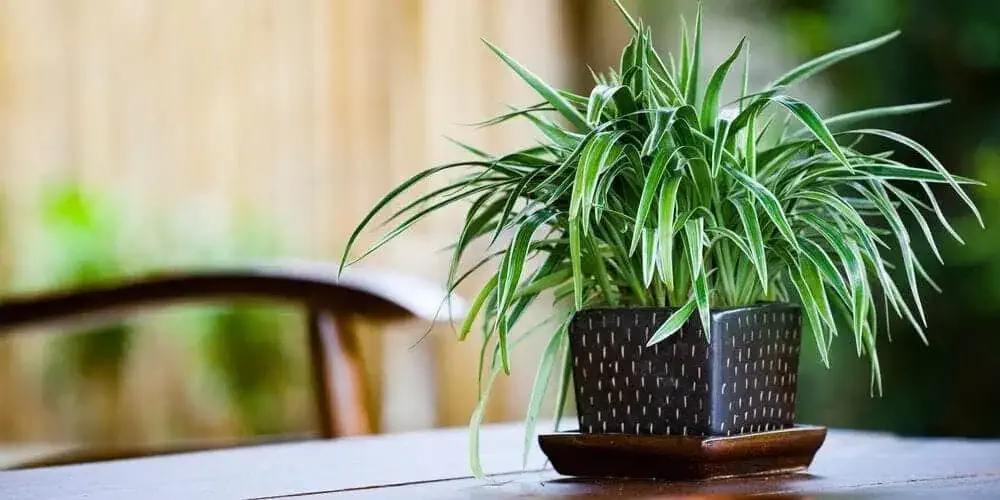
It tolerates medium indirect sunlight or bright artificial lighting very well; this allows it to efficiently photosynthesize and produce lots of oxygen in return.
Additionally, you can propagate new plants by cutting off ‘baby’ spiders from the mother plant – which also makes it ideal as a gift for friends or family members interested in having some greenery indoors.
All in all, if you’re looking for an indoor plant with minimal fuss and maximum benefits, then look no further than the Spider Plant!
Peace Lily
The Peace Lily is one of the top 10 highest oxygen producing indoor plants, making it a great choice for adding greenery to your home.
It requires creative placement as well as potting soil and regular watering techniques to ensure its health benefits.
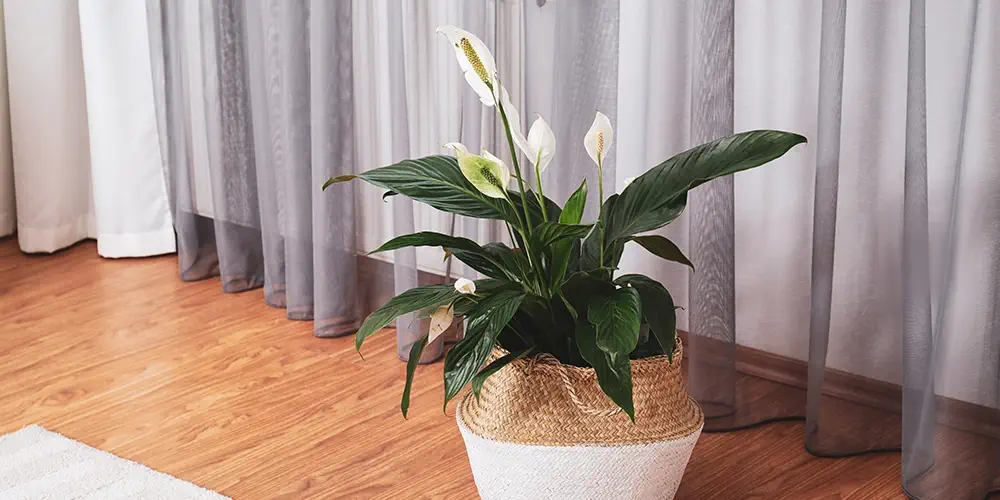
The Peace Lily prefers indirect sunlight or fluorescent light, so make sure you consider this when placing in an area with enough access to these types of light requirements.
With proper care, the Peace Lily can thrive indoors providing beautiful foliage that purifies air quality and adds life to any space.
Aloe Vera
Following the peace lily, aloe vera is another great option for increasing oxygen levels indoors. It has a wide range of benefits and can have a decorative value in any room. Not only does it increase air humidity, but it also offers medicinal benefits as well as comes with some plant care tips to keep in mind when caring for your aloe vera.
There are several varieties of aloe vera plants available, each offering their own unique look. When selecting an aloe vera plant for your home or office, make sure it is from a reputable nursery to ensure you get the best quality possible. Additionally, there are many different sizes and colors to choose from so finding one that fits perfectly into your space should not be difficult.
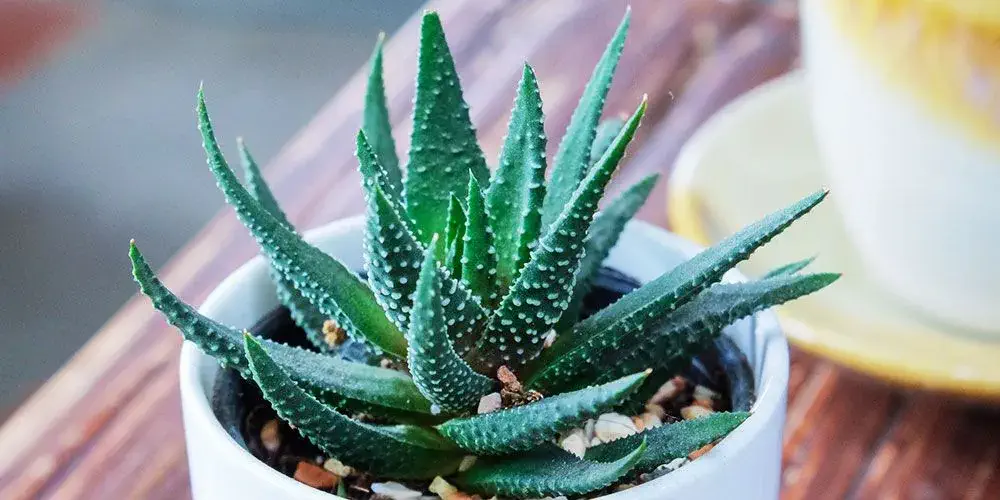
Though most people associate aloe vera with its healing properties, it’s important to note that this type of succulent is toxic if ingested and requires moderate watering – too much water will cause root rot whereas too little water can cause brown leaf tips.
In order to maintain healthy leaves and promote growth, fertilize the soil every couple months during spring and summer seasons. To extend its life even longer try misting the leaves at least once a week.
Gerbera Daisy
The Gerbera Daisy is a popular and beautiful houseplant that excels in oxygen production. It has vibrant, daisy-like flowers of various colors and can flower throughout the growing season with proper care. Not only does this plant provide beauty to any indoor space, but it also provides many other benefits such as air purification.
When caring for a Gerbera Daisy, there are several key things to keep in mind: watering needs, light requirements, propagation techniques, and soil types. Watering your Gerbera Daisy should be done regularly so the soil remains moist but not soggy; however too much water could cause root rot or fungal diseases. Providing adequate amounts of sunlight will help ensure your plant produces lots of blooms. Propagation methods include division or seed planting which can easily be accomplished by anyone. For optimal growth, use well draining potting soil that contains organic matter for nutrients.
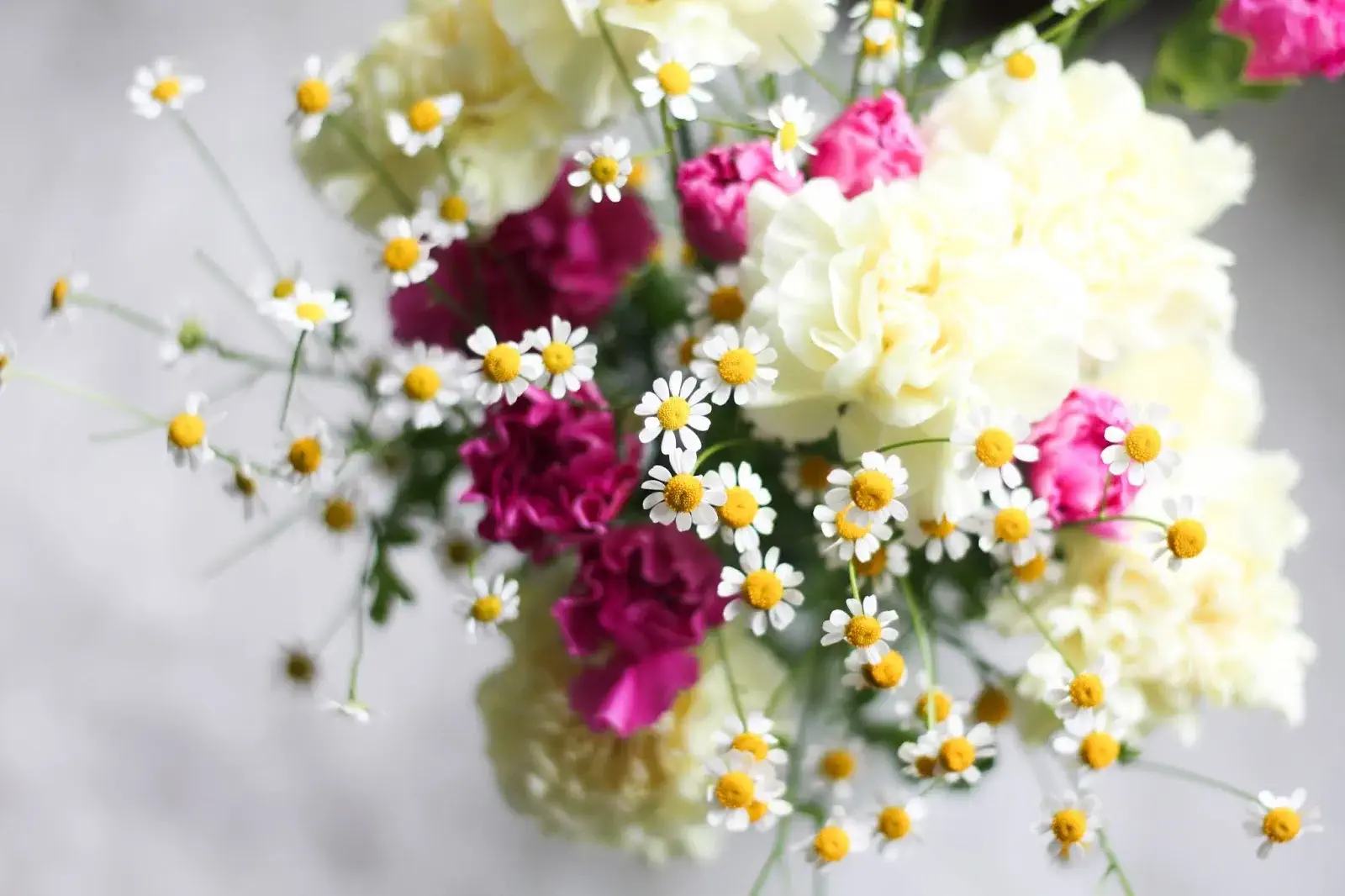
Gerbera Daisies make an excellent addition to any home due their captivating beauty and ability to produce high levels of oxygen while cleaning the air we breathe. With the right combination of attention, love, and care you’ll have a healthy happy houseplant that will last for years!
| Benefits | Needs |
| Beauty | Watering |
| Air Purification | Light Requirements |
| Oxygen Production | Propagation Techniques |
| Long Lasting | Soil Types |
Basil
Glorious green basil is the perfect pick for producing plenty of oxygen. From harvesting to health benefits and cooking with it, this fragrant flora is fabulous for filling your home with freshness.
Here are a few features that make basil an excellent choice:
- Harvesting Basil – To harvest, simply snip off stems near the top of the plant before flowers form.
- Health Benefits Of Basil – Packed full of antioxidants and vitamins A, C, K & B-6; basil also contains iron, calcium, magnesium and omega 3 fatty acids.
- Cooking With Basil – Adding freshly chopped leaves to salads, pastas and pizzas can provide flavor as well as nutritious value.
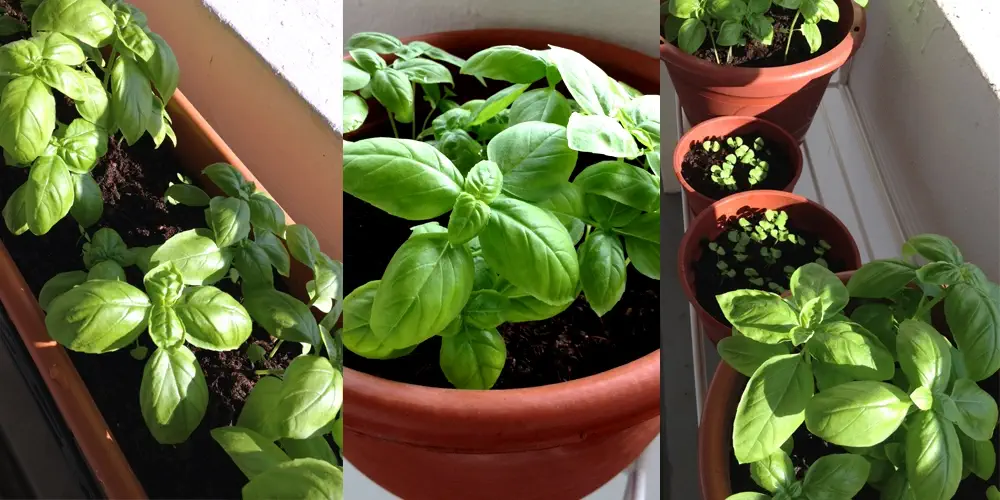
Growing basil indoors requires bright light but not direct sunlight. It needs moderate temperatures between 60 – 75°F (15–24 °C) in order to thrive.
When stored correctly at cool room temperature or refrigerated in plastic bags with damp paper towels around the stems, basil leaves can last up to two weeks.
By adding some glorious green goodness into your life through growing and enjoying basil you’ll be able to reap all its rewards from health benefits to flavourful feasts!
Weeping Fig
The Weeping Fig, or Ficus Benjamina, is a great choice for anyone looking to add some oxygen producing greenery to their indoor space.
This lush plant needs special care and attention in order to thrive indoors. Here are the basics of caring for this particular species:
Light requirements are crucial when it comes to keeping a Weeping Fig alive indoors. It should be placed near an east-facing window where it can receive plenty of indirect sunlight throughout the day. If you don’t have access to natural light, you’ll need to provide artificial lighting with fluorescent bulbs or grow lights.
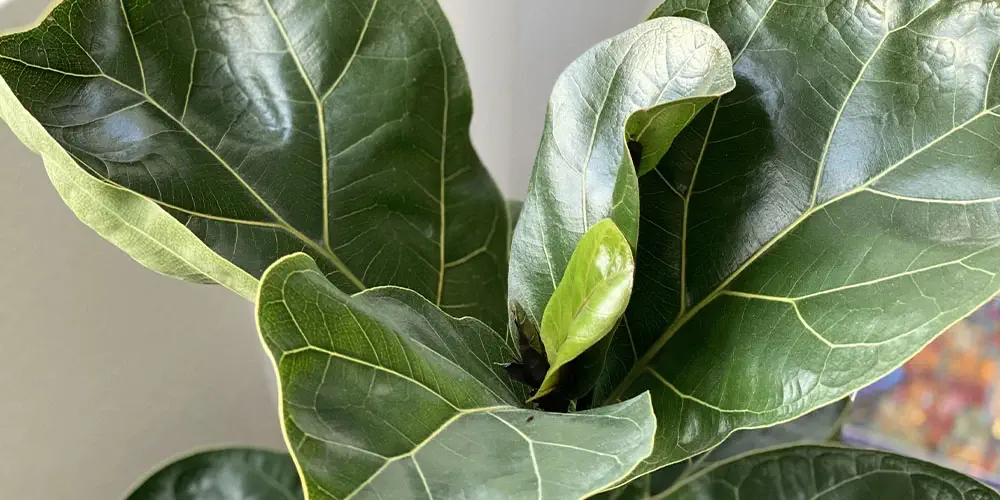
Pruning techniques should also be taken into consideration when caring for a Weeping Fig. The branches tend to droop over time so they will need occasional trimming in order to keep them upright and healthy. Regular pruning will help maintain the desired shape as well as encourage new growth.
When it comes to watering and fertilizing your Weeping Fig, you want to make sure that you’re not overwatering or overfertilizing the plant – both of these things can easily cause root rot which can kill your plant quickly if left unchecked.
Water only when the top inch of soil feels dry and use either liquid fertilizer or slow-release pellets every couple weeks during active growing periods (spring through fall). Following these tips will ensure that your Weeping Fig stays happy and healthy!
Rubber Plant
The rubber plant, similar to many other plants, is a hardy and resilient creature that will thrive with the right care. It is like an old friend – when given proper attention and nurturing it rewards you tenfold in return.
With its large glossy leaves and thick stem, it has become one of the most popular indoor houseplants due to its air purifying benefits as well as its ability to withstand relatively low light conditions.
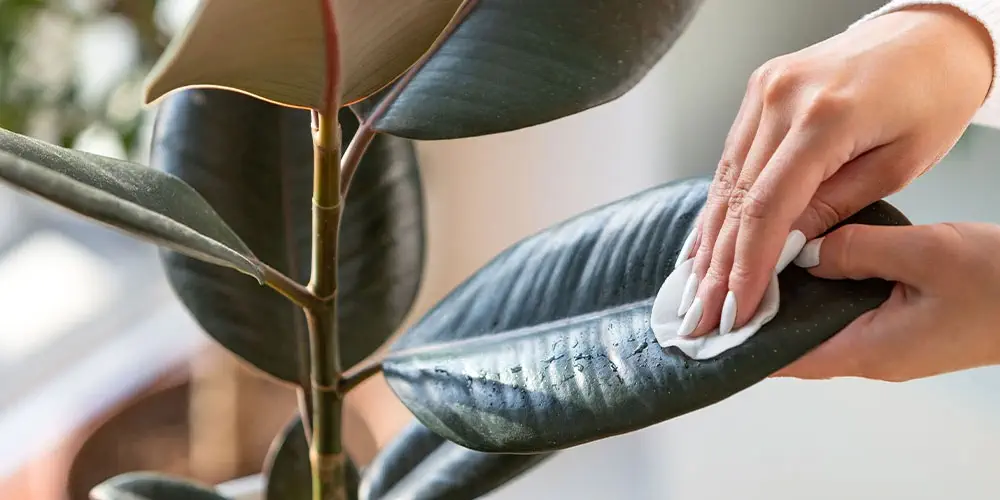
In terms of watering requirements, the rubber plant prefers moist soil but not overly wet – so it needs regular waterings but should never be left sitting in standing water.
In regards to potting soil needs, make sure to choose a mix high in organic matter such as peat moss or composted bark which helps ensure adequate drainage while still providing plenty of nutrients for your growing plant. Additionally, fertilizing every two weeks during the spring and summer months keeps your rubber plant’s growth at optimum levels.
Light requirements are also very important for this species; however they prefer indirect sunlight rather than full sun exposure. Place them near windows facing east or west where direct sunlight does not hit directly on their leaves for too long each day.
By following these tips on how to properly care for your rubber plant you can guarantee yourself years of beautiful foliage and clean air indoors!
Frequently Asked Questions
How Often Should I Water My Indoor Plants?
When it comes to watering your indoor plants, safe and proper practices are key.
Generally speaking, you should water when the top inch of soil is dry in order to prevent root rot or any other damage caused by overwatering.
Additionally, you’ll want to take humidity levels, temperature control and drainage into consideration for optimal plant health.
To ensure good drainage be sure to use natural fertilizers that won’t clog up the soil.
With these tips in mind, your indoor plants will stay healthy and happy!
How Much Sunlight Do My Indoor Plants Need?
Thriving indoor plants require more than just a splash of water—they need the perfect amount of sunlight, air circulation and soil quality for optimal growth.
To keep your potted greens healthy and happy, you’ll want to pay attention to light levels, temperature control, pot size and other factors. That means careful monitoring is key if you’re hoping to create an oasis full of lush green life!
When it comes to providing enough natural light, aim for around 4-6 hours of direct sun per day in order to ensure that your plant babies flourish.
What Is The Best Way To Fertilize My Indoor Plants?
It’s important to fertilize your indoor plants properly in order to keep them healthy and thriving.
Pruning techniques, repotting tips, pest control, soil nutrients and plant diseases all play a role when it comes to providing the right amount of fertilizer for your plants.
For optimal growth, you should use an organic fertilizer specifically designed for houseplants; this will help ensure that they have the proper combination of essential vitamins and minerals needed to sustain life.
Additionally, be mindful not to over-fertilize as this can cause damage or even kill your beloved plants.
What Is The Average Lifespan Of An Indoor Plant?
A picture-perfect home isn’t complete without a few houseplants to liven up the place.
But with all of the pest management, light exposure, humidity levels, drainage systems and overwatering prevention that comes along with owning an indoor plant, how long can one expect their leafy friend to last?
On average, most indoor plants have a lifespan of about two years when taken care of properly.
However, some species may live longer if given adequate attention – think five or more years!
How Can I Tell If My Indoor Plant Is Getting Enough Oxygen?
Monitoring the oxygen levels in your indoor plants is important for ensuring their health and longevity. Potential problems can arise if they are not receiving enough oxygen, so it’s important to identify potential signs of distress early on.
Air circulation is a key factor in providing adequate amounts of oxygen – keep an eye out for air-circulating fans or open windows around your plant. Additionally, humidity levels should be monitored as too much moisture can create fungus growth that will inhibit oxygen flow.
As with all things related to disease prevention, proper light exposure is essential. Aim to get at least six hours of sunlight a day (or provide artificial lighting) and make sure your plants have plenty of room between each other to allow airflow.
Conclusion
Overall, taking care of indoor plants can be a rewarding experience. However, if you want to ensure your home is filled with oxygen-rich air, there are certain houseplants that are better suited for this purpose than others.
The top 10 highest oxygen producing houseplants include the snake plant, peace lily, aloe vera, spider plant, heartleaf philodendron, golden pothos, dracaena marginata and more.
I understand some people may think it’s too much work tending to these plants but trust me when I say it only takes minimal effort! All they need is regular watering and an occasional fertilizing session every few months.
Plus, once established most indoor plants have a long lifespan so you’ll get plenty of fresh air in your home for years to come.

